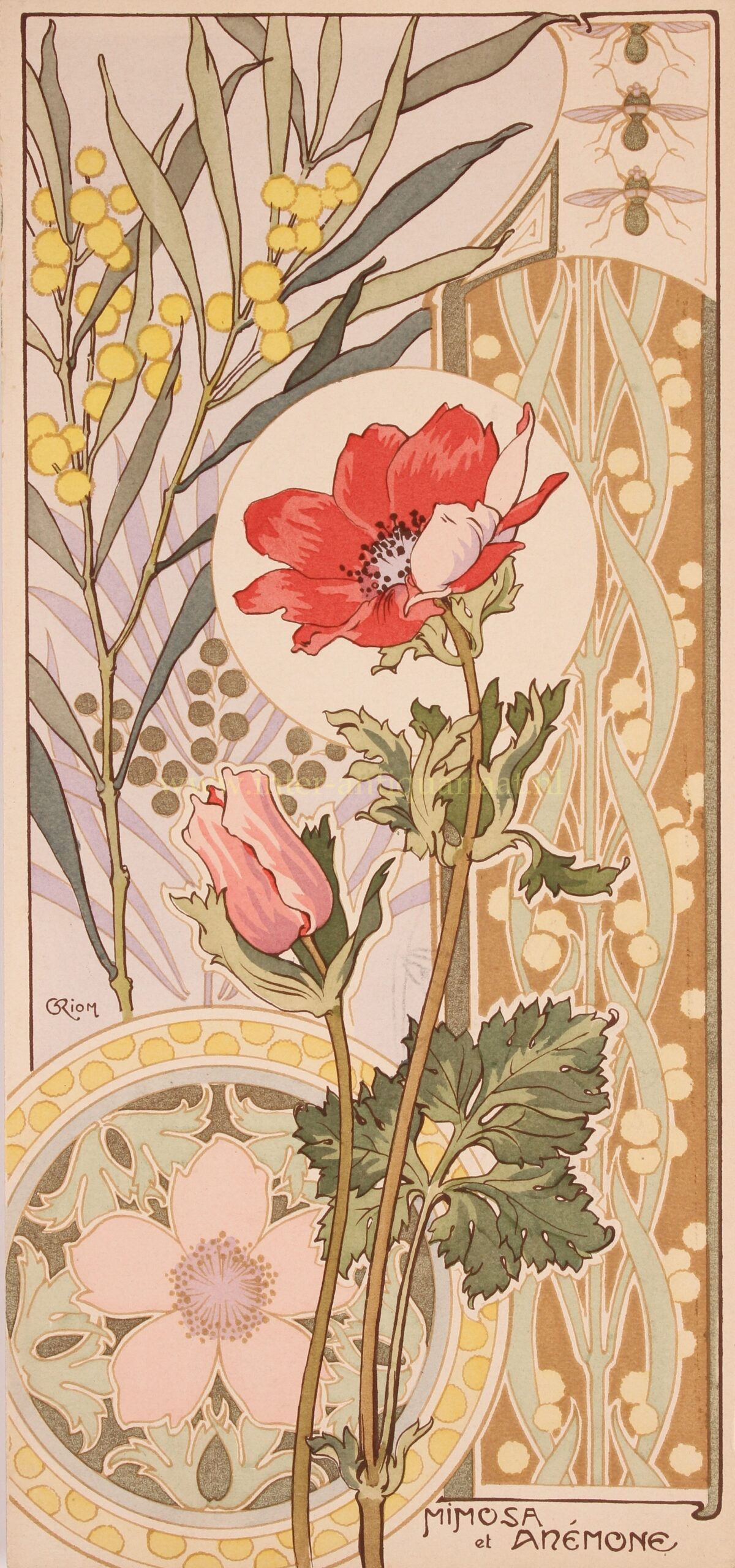“Mimosa et Anémone” [mimosa and anemone], colour lithograph created around 1900 by Georges Riom (1877-1945). Signed in the image on the left in the center. Size: approx. 39 x 18 cm.
This beautiful small poster has a graceful asymmetrical composition typical of Art Nouveau. Nature was often the main source of inspiration, featuring long-stemmed, gracefully stylized plants and flowers. The elegant flowers are depicted in a style reminiscent of Japanese prints: two-dimensional and almost abstract, with a graceful composition and vibrant colors.
The renowned dealer Siegfried Bing was a driving force behind the increasing Japanese influence in the Western art world. The prints imported by Bing found eager reception among artists seeking a new style, including Vincent van Gogh. Bing specialized in Japanese art at his Parisian gallery, L’Art Nouveau, from which the movement derived its French name.
The mimosa (also known as the sensitive plant) with its small yellow globular flowers symbolizes the power of femininity and female solidarity. The anemone represents “I want to be with you,” anticipation, caring, and honesty, but it also serves as a symbol of abandonment and faithful, innocent love. It also symbolizes tears of women that dry up easily, as its lifespan is so short.
Price: SOLD


